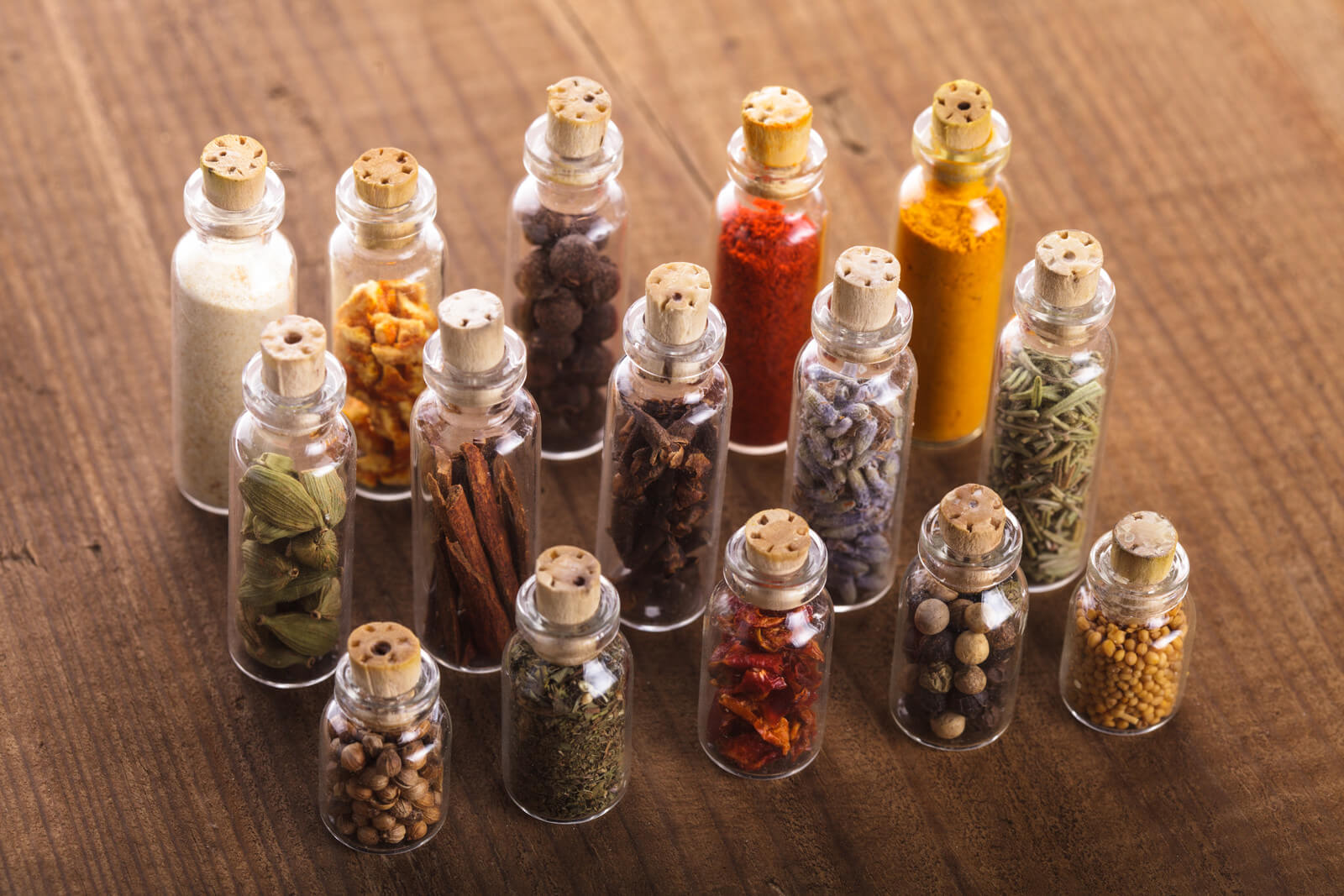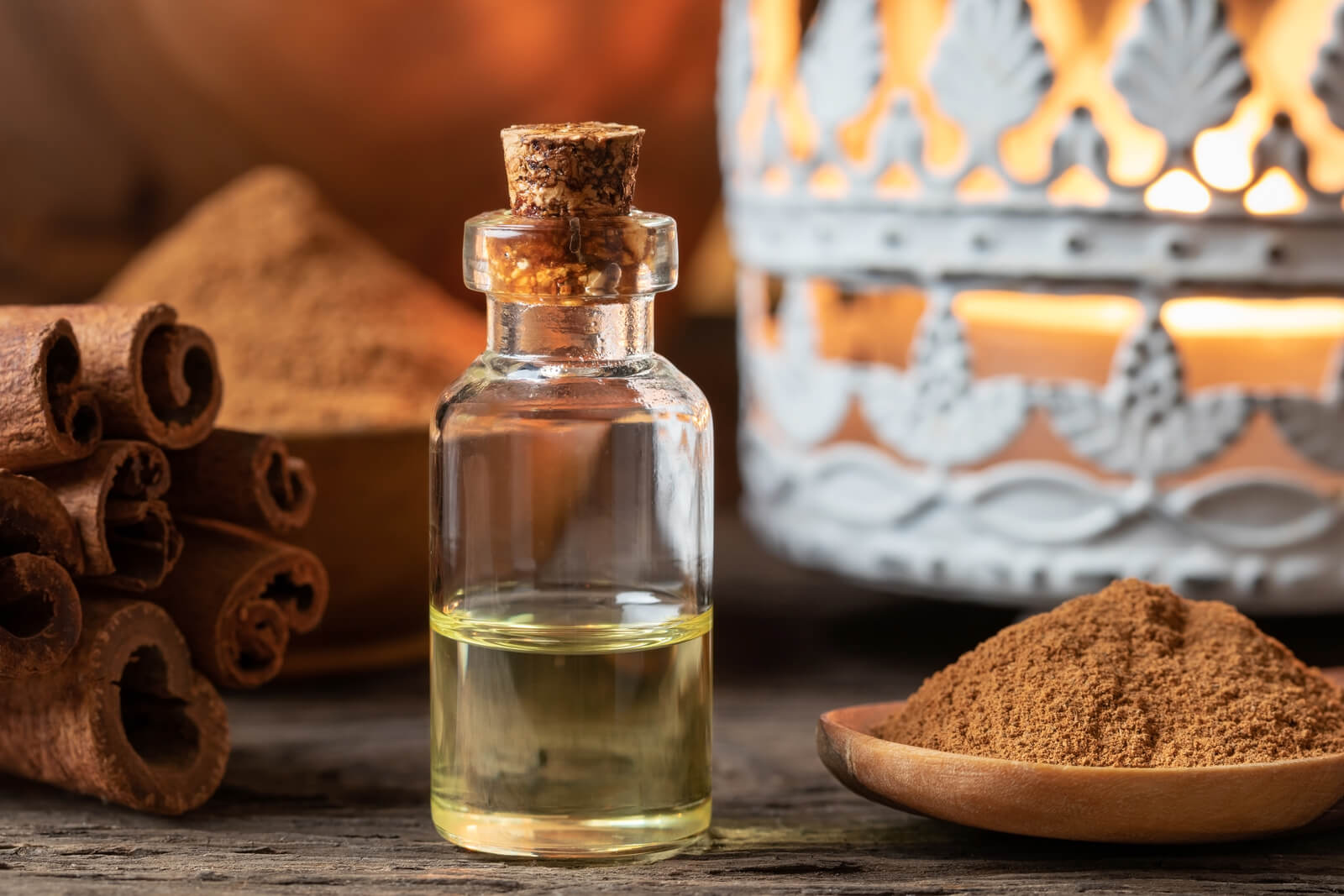See all "Herbs" Section Topics

There are many plants in nature that have a natural ability to kill various fungal pathogens. Such plants can be easily taken advantage of to allay and destroy fungal infections. Yeast infections are no different from other fungal infections in this regard. There are many herbal remedies for yeast infections that will work very well. In addition to being efficacious healers, herbs are often safer than synthetic prescription antifungal medications. Also, Candida yeast can rapidly become immune to certain antifungal drugs; however, herbs can always kill even the most stubborn multidrug resistant Candida strain. In addition to immunity, Candida can develop biofilm to protect itself; increasing its resistance to some prescription antifungal drugs by over 1000 times (Khan et al). Herbs and essential oils can cut through this biofilm and kill such intrenched Candida. So, if you're looking for a great natural cure for yeast infections, you can try a few of the herbs listed below!
Instead of looking for just one herb to use for a yeast infection treatment, try using several herbs together. Dr. James Duke, in his book The Green Pharmacy, highly recommends mixing antifungal herbs together to create a healing synergy. He personally liked to use black walnut husks, garlic, and tea tree oil together when he has a fungal infection. Dr. Duke also says it’s entertaining to mix up the herbs as well! In The Green Pharmacy, he states this about mixing herbs together:
Mixtures of antifungal herbs almost always work better than single herbs. The synergy—the harmonious working together—of antifungal herbs has been demonstrated in several studies. In one test of ten plant species whose oils were antifungal, researchers noted that “combinations of the antifungal essential oils increased their activity remarkably.” In a similar study, researchers noted that “in all the oil combinations, the antifungal potency was found to increase over individual oils.”
The Green Pharmacy (p. 246)
A 1/2 Day & Yeast is Gone!
Linda Allen suffered from yeast infections for years. Through researching natural medicine & Candida, she found an efficacious solution!
Linda is one expert you want on your side! Let her show you how to get rid of a superficial yeast infection in just 12 hours; AND, keep it gone!
A 60-day, 100% money back guarantee is provided.
Visit Official Site!How to Use Herbs for Yeast Infections

Topical application is likely going to be the safest and best route to choose for killing the yeast on your body. You can make herbal teas, infuse oils, or add the powdered herbs to honey. Try making an infusion of your herbs with apple cider vinegar (ACV) and diluting it with water before you use it. As research indicates, you will need no more than a 1% concentration of the apple cider vinegar to prove therapeutic for a Candida infection. In a diluted form, ACV can be utilized as a vaginal douche (you can learn more about ACV here: Apple Cider Vinegar for Yeast Infection). Then, before you go to sleep, mix some herbs into honey and soak a tampon on the mixture. Insert the tampon and let it stay in the vagina while you sleep. In the morning, you can remove the tampon and wash out the vagina with warm water. This should give yeast a good blow. You may have to repeat the douching and honey tampon procedure for a few days.
Infusing oils can take some time, and you can always make an infused oil in advance, before you get a yeast infection. To do this, simply take dried herbs, put them in a jar, and fill the jar up with oil. Let the oil and herbs sit for several weeks. After enough time passes, you can take out the old herbs and add fresh herbs to the oil; this will infuse the oil with even more plant phytochemicals.
If you need an infused oil immediately, you can use heat to expedite the infusing process. Simply take a generous helping of each herb you're using and place it in a pan. Add your oil to the pan and heat the oil on medium-low heat for about an hour. Once the oil cools, you can use it topically where you're experiencing the infection. For an even stronger infused oil, simply remove the old herbs after they’ve been heated in the oil, add fresh herbs and reheat the oil again. You can do this process several times if you would like.
Decoctions of various herbs can be made just like you make tea. Add dried herbs to water and simmer the mixture for about 20 minutes. Often 5 to 7 teaspoons of the herbs should be used for every cup of water; if you want a strong decoction, that is. Make sure you do not drink any herbs that are not safe for internal use. A decoction of well known antifungal herbs should probably be safe for external use.
If you have essential oils on hand, feel free to add an oil to your topical yeast infection treatment. Several essential oils are very effective at killing Candida; and, as Dr. Duke states, the more plants you use the more healing synergy could result.
Eliminate Bacterial Vaginosis & Vaginal Odor
Jennifer O’Brien is one prominent expert on BV that knows how to get rid of vaginal odor. BV is a common infection that you don’t have to put up with.
Jennifer will show you how to naturally eliminate vaginal odor in just 3 days.
A 60-day, 100% money back guarantee is provided.
Visit Official Site!Herbal Remedies for Yeast Infections

The following herbs are all proven antifungals that have a documented ability to kill various types of Candida. Each page will give you summations of studies relating to the herb’s Candicidal efficacy. You may want to use whichever herb is easiest to get a hold of, but you shouldn’t need more than a few for treating a yeast infection.
Black Walnut
Black walnut is a great plant to use for treating a yeast infection. Black walnut, and walnut trees in general, produce a substance called juglone. Juglone is a great antifungal, and can be used to treat Candidiasis. The husks of the walnut’s fruit, the green outer shell known as the pericarp, contains a high level of juglone. Try to use the outer, fleshy shell of black walnut fruit for the best assault on yeast.
Learn more here: Black Walnut for Yeast Infections
Chamomile (Matricaria chamomilla)
Chamomile has around 9 different Candida fighting chemicals in it, making it powerful against yeast infections. In addition to stopping Candida, chamomile can be used to treat certain bacterial and viral infections. This herb is certainly one to have on hand for a variety of medicinal uses. There are different species of chamomile, so make sure you’re using Matricaria chamomilla (common names: annual chamomile, german chamomile, wild chamomile) and not Chamaemelum nobile (common names: garden chamomile, perennial chamomile, Roman chamomile) as the former is perhaps a better treatment for yeast infection than the latter.
Learn more here: Chamomile for Yeast Infections
Cinnamon (Cinnamomum zeylanicum)

Cinnamon is a great natural remedy that you probably have in your pantry already. The bark, what cinnamon powder is made from, is antifungal. Cinnamon bark contains primarily three chemicals: trans-cinnamaldehyde, eugenol, and linalool. The phytochemicals in cinnamon bark are the reason why it works well at stopping Candida. If you have cinnamon sticks, you can boil them in water and make a tea. The cinnamon tea can be used topically and you can soak a tampon in the tea to use overnight.
Learn more here: Cinnamon for Yeast Infections
Clove (Syzygium aromaticum)
Cloves can help to break up persistent Candida biofilm and greatly enhance any other herbs or prescription drugs you might be using to fight Candida. Clove is also able to inhibit Candida yeast, as well as destroy biofilm; so, it’s an excellent choice for an herbal remedy. There are different species of cloves, but one of the best, Syzygium aromaticum, contains a large amount of the chemical eugenol. You may have cloves on hand in your pantry, simply crush them up and use them in the way that you choose.
Learn more here: Cloves for Yeast Infections
Garlic (Allium sativum)
Garlic is a potent antifungal, antibacterial, and antiviral herb that has a wide array of health uses. The ancient Egyptians would use honey and garlic mixtures to treat infected teeth. You can use garlic internally or topically to get rid of a yeast infection. Make sure you mix the garlic in a blender and let it set for a stronger remedy. The mixing of garlic causes alliin and alliinase to react together and form allicin. Allicin won’t be formed in your stomach as the strong acid deactivates the enzyme alliinase. However, pureed garlic can be very strong and may cause skin irritation!
Learn more here: Garlic for Yeast Infections
Goldenseal (Hydrastis canadensis)
Goldenseal was traditionally used medicinally by the Native Americans long before modern science documented the herb’s healing qualities. Goldenseal contains a few compounds (canadine, canadaline, hydrastine, and berberine) that are able to inhibit Candida. Using goldenseal with fluconazole also increases the effectiveness of this prescription antifungal. Use goldenseal to attack Candida with an assortment of natural substances that are toxic to its development!
Learn more here: Goldenseal for Yeast Infections
Henna (Lawsonia inermis)

Henna is popularly used for tattoos; however the leaves do possess antifungal properties. Just a few milligrams of henna can work about as well as prescription antifungal drugs do at treating a yeast infection. Consequently, it is a great choice for an herbal remedy. The primary reason why henna works against yeast is due to the presence of a chemical called lawsone. You can make the dried leaves into a tea and use it topically or as a douche.
Learn more here: Henna for Yeast Infections
Licorice (Glycyrrhiza glabra)
Licorice has long been used in India; there, it is used in over 1000 different Ayurvedic remedies. For use against Candida, licorice is packed with about 25 different chemicals that are known antifungals. You can take this herb internally and use it externally as a topical treatment. Licorice root can also stop Candida biofilm and germ tube (hyphal) growth. Consequently, licorice should be an herb you try to procure for your herbal treatment.
Learn more here: Licorice for Yeast Infections
Pau D'Arco (Tabebuia, various species)

Pau d’arco, indigenous to South America, is an herb that has long been used by natives of that area for medicinal purposes. Pau d’arco contains two naphthoquinones, lapachol and beta-lapachone, that help give this herb its Candida killing power. Often, the bark of these plants are utilized in decoctions or slaves for the express purpose of getting rid of a yeast infection. If you can, find a salve containing pau d’arco and follow the directions on the package to treat your infection. This herb has been proven to kill many different species of Candida, and thus should work for your unique situation!
Learn more here: Pau D’Arco for Yeast Infections
Pot Marigold (Calendula officinalis)

Pot marigold, also known as Spanish marigold, has a long history of being used as a medicinal herb. Its medical application is at least as old as the 12th century. This herb contains flavonoids (natural antioxidants) and other chemicals that can stop some fungi, bacteria, and viruses. Frequently, dried pot marigold flowers are used to infuse oil or water. The infused liquid is then applied topically to the area being attacked by yeast. There is research showing that this plant can inhibit multiple types of Candida; making it an ideal choice to use for such infections. Pot marigold may stimulate menstruation, so if you’re pregnant, you should avoid using it.
Learn more here: Pot Marigold for Yeast Infections
Clair Goodall: Author & Nature Lover
Clair Goodall is a bee-obsessed natural medicine convert from Minnesota. She is one expert you might want to know more about!
Clair will help you protect you and your family from toxic products and chemicals and help you discover solutions from nature.
Also, Clair’s book is backed by a 60-day, 100% money back guarantee
Visit Official Site!A Natural, 12 Hour Yeast Infection Cure

According to a research paper published in Clinical Microbiology Reviews [12.1 (1999): 80-96], Candida species are quite ubiquitous organisms. Candida are most frequently present in the mouth; and, live in 31% to 55% of healthy people. The species that causes approximately 70% to 80% of all Candida infections is C. albicans.
The Chinese Journal of Obstetrics and Gynecology [2011 Jul;46(7):496] reports there appears to be a correlation between intestinal Candida infections and vaginal yeast infections. And, this provides a clue, as to why yeast infections in general, can reoccur.
This study states, in 148 cases of vaginal candida infections, 33.1% of the women were infected in both the intestines and vaginal area. The recurrence rate of yeast infections, in women with simultaneous intestinal infection, was significantly higher than for women who did not have an intestinal infection. This study concluded that vaginal yeast infections are highly associated with simultaneous intestinal Candida infection.
As research appears to indicate, systemic Candida infections can and do happen. A more systemic Candida infection may primarily get a foothold in the intestines; and cause a wide array of problems. If your yeast infections keep happening, a systemic Candida problem may be why.
One woman who suffered from a systemic Candida infection, for about 12 years, was Linda Allen. The systemic Candida infection that attacked Linda caused a wide range of health problems in addition to yeast infections. Some of these problems, Linda describes in her own words in the following quote:
To be honest, it was hard to pinpoint exactly what was wrong: I wasn’t really sick, but I wasn’t really well either. I had listlessness, fatigue, brain fog, stomach ailments, unexplained rashes, skin infections, and so on. It seemed like every day brought a new challenge.
My energy was sapped and I felt exhausted, which affected my grades and put a big dent in my social life.
Linda Allen’s symptoms included an embarrassing vaginal discharge, severe itching, and burning sensations. Her infections were difficult to deal with, and Linda’s health problems cost her financially as well. Linda states these infections of Candida can become excruciating when they happen as frequently as a menstrual period.
Yet, Linda spent a great deal of time in research; and even questioned health professionals who were kind enough to share some time with her. Linda even tried an array of purported "cures." Although it took a while, eventually, Linda put together a natural treatment plan she hoped would solve her Candida situation.
After spending about a year refining her new approach, Linda tried her system on herself. It worked amazingly well. Linda even returned to a few medical doctors to get tested for the presence of infections. These tests revealed all indicators of infection had vanished! Linda was indeed well again, after such a long, difficult journey.
Linda has since published a book detailing how to copy her success. She also includes a 12 hour yeast infection cure that can get rid of a superficial (such as a genital yeast infection or oral thrush) yeast infection in about 12 hours.
Linda’s publisher protects those who get her book with a 60 day, 100% money back guarantee. Linda’s publisher, a subsidiary of the United States based firm Keynetics Incorporated, is a reputable digital retailer that has been around for a long time. They have great customer service, and make getting a full refund on Linda’s book quick and easy. If you’re not satisfied, you can quickly get all your money back.
If you would like to learn more about Linda’s journey to freedom from Candida, see reviews of others who tried her natural system, or find out more about her efficacious book; you can find more information at Linda Allen’s website.
Author: Mr. Nicholas Gross

Nick Gross is a natural medicine enthusiast who has been researching and writing about natural medicine since 2008. Nick is primarily a web developer but also researches and authors written and video content about natural health. Nick has a bachelor’s degree in Management Information Systems from the University of Northern Iowa.
Disclaimer
The information on this website is not a prescription for anyone. This information is for informational or educational purposes only, and is not a substitute for professional medical advice or consultations with healthcare professionals.
Affiliate Disclosure
Some of the links provided on this website are affiliate links. When a purchase is made through these links, Candida Hub earns money from commission. This helps to keep the website up and helpful to people for free. Thank you for any support!
Stay Up to Date
If you enjoyed this article, consider following / liking our Facebook page. This page is primarily utilized to alert followers of new articles that are put on Candida Hub. Candida related news is also discussed. While you are there, you can see what has been more recently added to Candida Hub.
SOURCES:
- http://dx.doi.org/10.1016/j.jep.2012.01.045 — Khan, Mohd Sajjad Ahmad, and Iqbal Ahmad. "Biofilm inhibition by Cymbopogon citratus and Syzygium aromaticum essential oils in the strains of Candida albicans." Journal of ethnopharmacology 140.2 (2012): 416-423.
- Google Books — Duke, J. A. (1997). The green pharmacy: New discoveries in herbal remedies for common diseases and conditions from the world's foremost authority on healing herbs. Emmaus, Pa: Rodale Press.
- https://doi.org/10.1128/CMR.12.1.80 -- Fidel, Paul L., Jose A. Vazquez, and Jack D. Sobel. "Candida glabrata: review of epidemiology, pathogenesis, and clinical disease with comparison to C. albicans." Clinical Microbiology Reviews [12.1 (1999): 80-96].
- https://pubmed.ncbi.nlm.nih.gov/22041440/ -- Lin XL, Li Z, Zuo XL. "Study on the relationship between vaginal and intestinal candida in patients with vulvovaginal candidiasis." Chinese Journal of Obstetrics and Gynecology (Zhonghua fu chan ke za zhi). [2011 Jul;46(7):496].







